- Home
- James Patterson
The House of Kennedy Page 4
The House of Kennedy Read online
Page 4
Besides, the Kennedy children are a rough-and-tumble brood, prone to intense physical rivalries. When the siblings “would play, they would knock each other down and gouge each other’s eyes out with toys.”
Rose sets up safety gates to protect the younger kids from the older ones, but the sounds of their roughhousing cannot be contained. According to biographer Evan Thomas, young Bobby “used to lie in [his] bed at night sometimes and hear the sound of Joe banging Jack’s head against the wall.”
The exception to such violence is Rosemary, a gentle child. “She loved music, and my mother used to play the piano and sing to her,” younger sister Eunice recalls.
Throughout another full decade of dutiful procreation—Eunice, Patricia, Bobby, Jean, and Ted, all born between 1921 and 1932—Rose polishes her presentation on motherhood. In 1936, she records in her calendar, “I looked upon child rearing as a profession and decided it was just as interesting and just as challenging as anything else and that it did not have to keep a woman tied down and make her dull or out of touch. She did not have to become an emaciated, worn-out old hag.”
She proves herself the antithesis of an “old hag” when prominent fashion designers name Rose one of the best dressed women of the 1930s. “Joe always wanted me to dress well,” Rose writes in her memoir. “It pleased him, in fact it delighted him, to have me turn up in something quite special.”
Rose holds her family to the same fashionable and elegant standards she herself maintains. Thus her frustration when Jack looks less than his best, as at his Harvard graduation, “in his black academic gown, with a suitably serious expression, but with his feet in a pair of worn brown-and-white saddle shoes.”
As the Kennedy family’s public profile begins to rise, Rose oversees the upkeep of appearances among her photogenic family. “Mother is a perfectionist,” Ted Kennedy says. She monitors the children’s food intake and weighs them regularly. She also invests in cosmetic dentistry, encouraging the display of the toothy trademark Kennedy smile in all family portraits. A Choate School classmate noting, “When Jack flashed his smile, he could charm a bird off a tree,” rates Rose’s regimen a success.
Each summer, the Kennedys gather at Hyannis Port, where the siblings share time and activities. Sailing is a family favorite. In 1935, calculates biographer Laurence Leamer in The Kennedy Women, “the young Kennedys, led by Eunice, Kathleen, and Pat…plus Rosemary, Jack and Joe Jr., came away with fourteen first prizes, thirteen seconds and thirteen thirds in seventy-six starts” from the Hyannis Port Yacht Club.
The Kennedy children are largely educated at boarding schools—convents for the girls, secular schools for the boys. For a time, Rosemary is homeschooled, but when she is in her early teens, Joe and Rose decide that Rosemary, too, is ready to live and study away from home. She does well academically, but she writes to Joe, “I get lonesome everyday,” asking him, “Come to see me very soon.”
The physical act of writing is difficult for Rosemary, but she perseveres, penning in blocky print affectionate letters to her father. “I would do anything to make you so happy. I hate to Disapoint [sic] you in anyway.” But Rose and Joe’s feelings go deeper than disappointment in Rosemary. They are fearful of being shunned in elite social circles for having a “defective child.”
Yet Rosemary is easy to please. “She loved compliments,” Eunice recalls. “Every time I would say, ‘Rosemary, you have the best teeth and smile in the family,’ she would smile for hours. She liked to dress up, wear pretty clothes, have her hair fixed and her fingernails polished. When she was asked out by a friend of the family, she would be thrilled.”
Rosemary’s happiest years may be those the family spends in England during Joe’s service as ambassador. On May 11, 1938, she is presented to King George VI and Queen Elizabeth at Buckingham Palace, looking radiant in a white gown embellished with silver piping alongside her parents and sister Kathleen.
But the timing of the family’s return to America upon Joe’s abrupt resignation and the eruption of World War II unfortunately parallels an inner conflict in Rosemary, whose behavior noticeably regresses at age twenty-one.
Back in the States by 1940, Rose and Joe are concerned that a “neurological disturbance” is the cause of their daughter’s emotional state, depression punctuated by violent verbal and physical outbursts. Eunice tells of the family being “terribly serious about the problem,” yet at the same time her parents continue to wonder whether Rosemary might simply try harder to assimilate into mainstream society.
With Joe Jr. departing for naval training, “the summer of 1941 would be the last one our family would ever have together,” Rose Kennedy poignantly recalls.
That autumn, Rosemary’s two closest-in-age siblings, Jack and Kick, are both living in Washington, DC. Kick is assisting an editor for the Washington Times-Herald, and Jack is a new ensign in the Naval Reserve, assigned to stateside intelligence work.
Rosemary is enrolled at Saint Gertrude’s School of Arts and Crafts, a convent school in DC catering to girls with developmental delays. She is known to sneak out at night, often for hours.
“I was always worried,” Rose explains, “that she would run away from home someday or that she would go off with someone who would flatter her or kidnap her.” Though past the typical pubescent age range, some doctors attribute Rosemary’s behavior to delayed hormonal changes. The real, unspoken fear is that she may have a sexual encounter with a man and become unwittingly pregnant.
“My great ambition was to have my children morally, physically, and mentally as perfect as possible,” Rose states. But Rosemary’s uncontrolled behavior could publicly topple that lofty standard.
Joe Sr. learns of a treatment he thinks can cure Rosemary: a lobotomy.
* * *
On June 5, 1941, the American Medical Association holds its annual session in Cleveland, Ohio. A panel discussion by the Section on Nervous and Mental Diseases examines lobotomy, warning against the imprecise surgical procedure intended to treat disruptive behavior. Separating the frontal lobe from the rest of the brain, in effect destroying it, cannot “restore the person to a wholly normal state.”
Through her connections at the Washington Times-Herald, Kick investigates the procedure and alerts her parents to its dangers. “Oh, Mother, no, it’s nothing we want done for Rosie,” Kick reports.
Even so, in the fall of 1941, as Ronald Kessler recounts in The Sins of the Father, Joe authorizes twenty-three-year-old Rosemary’s admission to George Washington University Hospital, where Dr. Walter J. Freeman is a professor of neurology.
Freeman and his partner, neurosurgeon Dr. James Watts, are American pioneers of lobotomy.
Rosemary will be strapped to the operating table and anesthetized—just enough to numb the entry site at her temples, where her skull will be pierced by two holes, through which a blunt metal rod will be inserted.
As Dr. Watts performs the surgery, the supervising Dr. Freeman interacts with their patient to chart the changes in her condition. Rosemary performs simple recitations of prayers and songs. “We went through the top of the head. I think she was awake. She had a mild tranquilizer,” Watts recounts to Kessler. “We made an estimate on how far to cut based on how she responded,” he explains.
When she stops talking, the operation is complete.
“They knew right away that it wasn’t successful. You could see by looking at her that something was wrong, for her head was tilted and her capacity to speak was almost entirely gone,” Kennedy cousin Ann Gargan tells Doris Kearns Goodwin.
From that point on, Rosemary’s mental capacity is irreversibly reduced to that of a preschooler. She will live out most of her life watched over by the nuns at St. Coletta’s School for Exceptional Children in Wisconsin.
“I don’t know what it is that makes eight children shine like a dollar [coin] and another one dull,” Joe later tells John Siegenthaler, a journalist who joins the presidential campaign of 1960. “I guess it’s the hand of God.”
Rose would never forget the preventable tragedy that Joe brings on their eldest daughter. She dedicates her memoir, “To my daughter Rosemary and others like her—retarded in mind but blessed in spirit.”
There are two Roses, but only one continues to bloom.
PART THREE
The Favorites
Joseph Patrick Kennedy Jr. and
Kathleen “Kick” Agnes Kennedy
Chapter 7
On August 12, 1944, the roar of propellers cuts through the silence in the English countryside surrounding Royal Air Force (RAF) Fersfield air base in Norwich. The airfield is newly constructed to Class-A bomber specifications for the Eighth US Army Air Force, commanded by Lieutenant General James Doolittle. It’s a remote site intended to shield the operations of highly secret missions.
This one is just days old. On August 4, the combined operations “Aphrodite” (Army Air Force) and “Anvil” (Navy) had begun a series of planned attacks on German-controlled weapon complexes. With the program’s reliance on the earliest stages of autopilot technology, the risk factor is high and the pressure to succeed higher still.
The first six Aphrodite missions have already failed.
Now Anvil makes its first attempt.
Navy lieutenant Joseph Patrick Kennedy Jr. looks through the caged cockpit of his battle-weary PB4Y-1—the navy designation of the Army Air Force’s B-24 Liberator. The cargo load totals 374 fifty-five-pound boxes distributed throughout the plane. Together, they contain eleven tons of Torpex, or “torpedo explosive,” a powerful combination of RDX, TNT, and powdered aluminum.
On board with the twenty-nine-year-old pilot is radio operator and copilot Lieutenant Wilford John “Bud” Willy. He is new to Joe Jr.’s second seat, outranking and replacing Ensign James Simpson, who sends Joe off with a handshake and parting words, “So long and good luck, Joe. I only wish I were going with you.”
Surrounded by a unique protective formation of a dozen aircraft, the unmanned bomber is to be flown like a modern-day drone, continuing on a crash course over France to its target, the Fortress of Mimoyecques.
The fortress is an underground military complex that houses two dozen German V-3 superguns, long-range cannons known as the “London gun,” primed to inflict even more damage than the thirty-six thousand bomb strikes of Unternehmen Loge, the German code name for the fifty-seven-day Blitz of 1940.
The plane takes off from the airfield’s six-thousand-foot runway, leveling at an altitude of two thousand feet. The crew then must perform two crucial tasks: arm the detonators, then turn over radio navigation control to a mother PV-1 aircraft flying at twenty thousand feet. Over the English Channel, the men will bail out and await a rescue boat.
At least, that’s the plan.
* * *
The “star of our family,” is what Joe Sr. calls his eldest son. It’s no surprise that the slender, handsome, athletic, blue-eyed Harvard student—accustomed to elite education and international travel—boasts among friends about the certainty of his destiny. After graduation from Harvard College in 1938, but before starting at Harvard Law School, Joe Jr. (and later Jack) undertakes an intensive tutorial with London School of Economics professor Harold Laski.
Laski, a socialist and a Jew who instructs via the exacting Socratic method, is a seemingly unconventional mentor for Joe Sr. to choose, but when questioned on it, he says, “My opinion has always been that you don’t have to worry about the other side. We’ve got all the arguments on our side.” It’s also a test of his sons’ mettle.
Together, Joe Jr. and Laski travel to Moscow to observe in person the regime of Joseph Stalin, general secretary of the Communist Party, whose name means “man of steel.” While there, Laski poses intricate questions to his pupil on world leaders and their philosophies, demanding, “What will you do about this when you are president?”
Joe Jr. had already encountered the powerful and persistent leadership style of Adolf Hitler on a 1934 trip to Munich, after which the impressionable eighteen-year-old interprets for his father a rationale for inverse power dynamics: “Hitler is building a spirit in his men that would be envied in any country…This spirit would very quickly be turned into a war spirit, but Hitler has things well under control.” Joe Jr. went on to describe the “excellent psychology”—perhaps intuited from Joe Sr.’s own anti-Semitic stance—of Hitler’s vision for “the need of the common enemy…the Jews,” though he added, “It is extremely sad, that noted professors, scientists, artists, etc. should have to suffer, but as you can see, it would be practically impossible to throw out only a part of them, from both the practical and psychological point of view.”
Six years later, however, as Joe Jr. begins his second year at Harvard Law in September 1940, America seems on the brink of war with Hitler. On the fourteenth of that month, President Roosevelt signs into law the Selective Service and Training Act, a peacetime measure to provide military instruction for up to nine hundred thousand male citizens between the ages of twenty-one and thirty-six.
Joe Jr., who is ranked near the middle of his law school class of five hundred, writes to a friend about his enlistment as “one of Roosevelt’s several million numbers,” adding, “I’ve always fancied the idea of flying and I’ve never fancied the idea of crawling with rifle and bayonet through European mud.”
Concerned about the risks of airborne warfare, Joe Sr. pressures his typically obedient son to accept a desk assignment arranged through his government connections.
Joe Jr. refuses. The rebellious streak that inspires him to seek his aviator’s wings in the Navy Air Corps rather than sit safely behind a desk alarms his father, who has spent years—including while ambassador to Great Britain—railing against America joining the war.
Now Joe Jr. is on the other side.
In his seventeenth fireside chat, recorded on May 27, 1941, Roosevelt makes his case for the impending necessity of war. “It is unmistakably apparent to all of us, unless the advance of Hitlerism is forcibly checked now, the Western Hemisphere will be within range of the Nazi weapons of destruction.”
In May 1942, Joe Jr. is awarded his wings.
In September 1943, he travels with his squadron to England, where they serve alongside the British Naval Command.
“Kennedy was such a good pilot that we would have flown with him anywhere,” states Alvin T. Jones, an aviation machinist’s mate who performed many of Joe Jr.’s preflight inspections.
By that summer of 1944, Joe Jr. has successfully completed well over the twenty-five bombing missions required to complete his tour. He pushes on through D-Day, then seeks out a special assignment requiring what his brother Jack would later describe as “the most dangerous type of flying.”
Joe Jr. has been preparing for this daring flight all his life.
In the last week of July 1944, Joe pens a cryptic letter to his father. “I am going to do something different for the next three weeks,” he writes. “It is a secret and I am not allowed to say what it is, but it isn’t dangerous so don’t worry.”
“Joe, don’t tempt the fates,” his father replies. “Just come home.”
Chapter 8
Ensign John Demlein, pilot of the PV-1 mother ship, tries for a light moment on the tarmac, asking Joe if he’s all caught up with his life insurance payments.
Joe flashes a toothy Kennedy grin. “I’ve got twice as much as I need,” he says.
The day before, the lieutenant had a completely different conversation with electronics officer Lieutenant Earl Olsen. Olsen warns that faulty detonator wiring may spark an airborne explosion—and pleads with Joe to abort the mission.
“There was never an occasion for a mission that meant extra hazard that Joe did not volunteer [for],” recalls Joe Jr.’s squadron roommate, Louis Papas. “He had everyone’s unlimited admiration and respect for his courage, zeal and willingness to undertake the most dangerous missions.”
By his brother Jack’s calculations, Joe Jr. has flown “probably more combat m
issions in heavy bombers than any other pilot of his rank in the Navy.” Yet he’s fighting an internal war on two fronts.
Jack, who joined the navy himself in September 1941, proudly declares, “Any man who may be asked in this century what he did to make his life worthwhile, I think can respond with a good deal of pride and satisfaction, ‘I served in the United States Navy.’”
Though his first duty is deskside in a Washington, DC, intelligence post arranged by his sister Kathleen, by August 1943 Jack Kennedy is a naval war hero.
In a sibling rivalry marked by one-upmanship, by Joe’s calculations, he has fallen behind. “My congrats on the [navy and marine] medal,” he writes his younger brother after Jack is honored for facing down enemy combatants. Joe can’t resist taking a dig at the same time, adding, “To get anything out of the Navy is deserving of a campaign medal in itself.”
“It was involuntary. They sank my boat,” Jack says self-deprecatingly of his heroics in saving the surviving crew after his gunship PT-109 was rammed by Japanese destroyer Amagiri in the South Pacific.
Yet despite all of Joe Jr.’s heroic airborne missions, not once has he ever directly engaged the German foe. He’ll have little to show for his risk-taking, Joe concludes. “It looks like I shall return home with the European campaign medal if I’m lucky.”
* * *
The August 12, 1944, mission proceeds according to plan. Eighteen minutes in, the autopilot is set and the plane makes its first remote-controlled turn. Willy removes the safety, and the explosive goes live. Joe radios the code phrase “Spade Flush,” signaling that the final task before bailout is complete. The aircraft formation passes over New Delight Wood, near the town of Blythburgh, a hundred miles north of London and four miles from the North Sea.

 Miracle at Augusta
Miracle at Augusta The Store
The Store The Midnight Club
The Midnight Club The Witnesses
The Witnesses The 9th Judgment
The 9th Judgment Against Medical Advice
Against Medical Advice The Quickie
The Quickie Little Black Dress
Little Black Dress Private Oz
Private Oz Homeroom Diaries
Homeroom Diaries Gone
Gone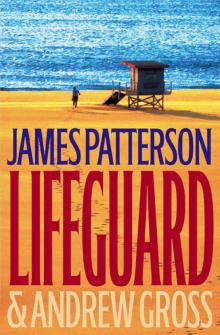 Lifeguard
Lifeguard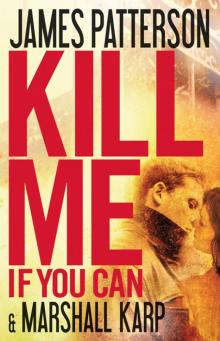 Kill Me if You Can
Kill Me if You Can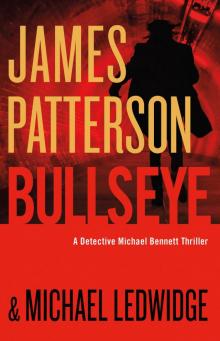 Bullseye
Bullseye Confessions of a Murder Suspect
Confessions of a Murder Suspect Black Friday
Black Friday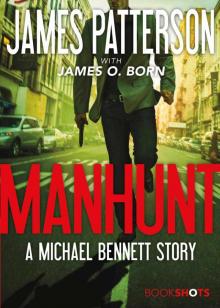 Manhunt
Manhunt Filthy Rich
Filthy Rich Step on a Crack
Step on a Crack Private
Private Private India
Private India Game Over
Game Over Private Sydney
Private Sydney The Murder House
The Murder House Mistress
Mistress I, Michael Bennett
I, Michael Bennett The Gift
The Gift The Postcard Killers
The Postcard Killers The Shut-In
The Shut-In The House Husband
The House Husband The Lost
The Lost I, Alex Cross
I, Alex Cross Going Bush
Going Bush 16th Seduction
16th Seduction The Jester
The Jester Along Came a Spider
Along Came a Spider The Lake House
The Lake House Four Blind Mice
Four Blind Mice Tick Tock
Tick Tock Private L.A.
Private L.A.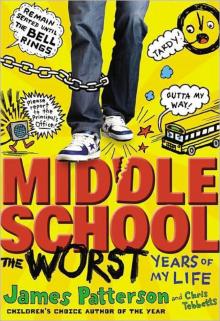 Middle School, the Worst Years of My Life
Middle School, the Worst Years of My Life Cross Country
Cross Country The Final Warning
The Final Warning Word of Mouse
Word of Mouse Come and Get Us
Come and Get Us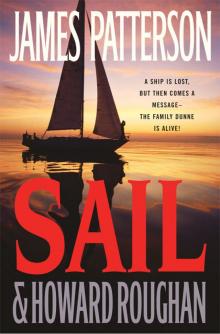 Sail
Sail I Funny TV: A Middle School Story
I Funny TV: A Middle School Story Private London
Private London Save Rafe!
Save Rafe!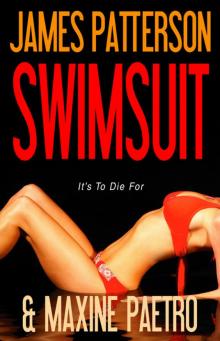 Swimsuit
Swimsuit Sam's Letters to Jennifer
Sam's Letters to Jennifer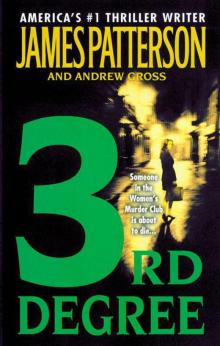 3rd Degree
3rd Degree Double Cross
Double Cross Judge & Jury
Judge & Jury Kiss the Girls
Kiss the Girls Second Honeymoon
Second Honeymoon Guilty Wives
Guilty Wives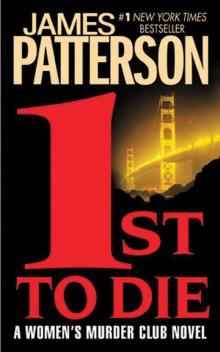 1st to Die
1st to Die NYPD Red 4
NYPD Red 4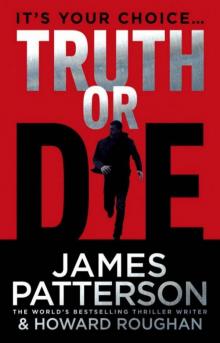 Truth or Die
Truth or Die Private Vegas
Private Vegas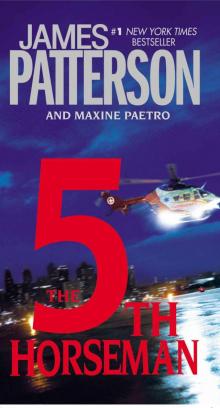 The 5th Horseman
The 5th Horseman 7th Heaven
7th Heaven I Even Funnier
I Even Funnier Cross My Heart
Cross My Heart Let’s Play Make-Believe
Let’s Play Make-Believe Violets Are Blue
Violets Are Blue Zoo
Zoo Home Sweet Murder
Home Sweet Murder The Private School Murders
The Private School Murders Alex Cross, Run
Alex Cross, Run Hunted: BookShots
Hunted: BookShots The Fire
The Fire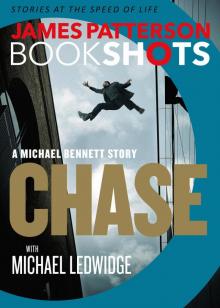 Chase
Chase 14th Deadly Sin
14th Deadly Sin Bloody Valentine
Bloody Valentine The 17th Suspect
The 17th Suspect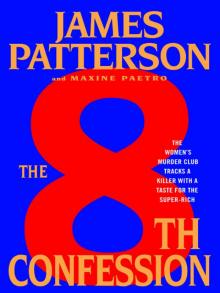 The 8th Confession
The 8th Confession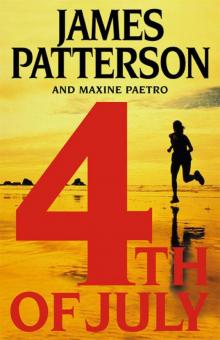 4th of July
4th of July The Angel Experiment
The Angel Experiment Crazy House
Crazy House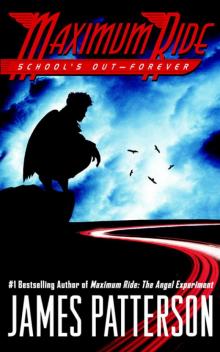 School's Out - Forever
School's Out - Forever Suzanne's Diary for Nicholas
Suzanne's Diary for Nicholas Cross Justice
Cross Justice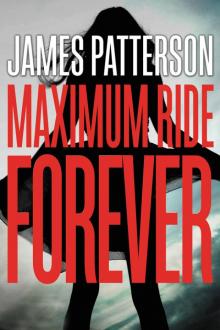 Maximum Ride Forever
Maximum Ride Forever The Thomas Berryman Number
The Thomas Berryman Number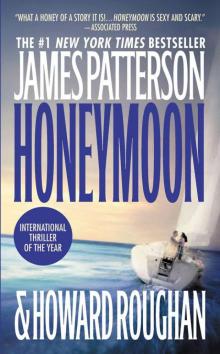 Honeymoon
Honeymoon The Medical Examiner
The Medical Examiner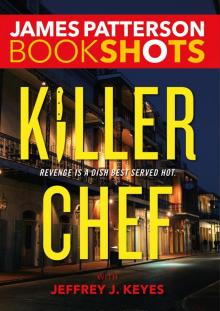 Killer Chef
Killer Chef Private Princess
Private Princess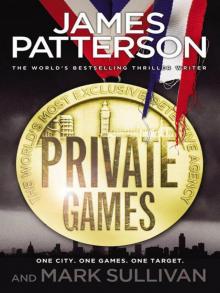 Private Games
Private Games Burn
Burn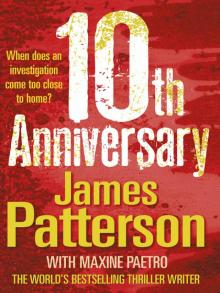 10th Anniversary
10th Anniversary I Totally Funniest: A Middle School Story
I Totally Funniest: A Middle School Story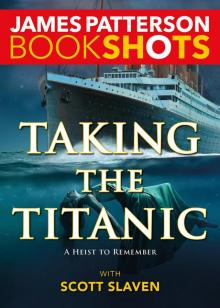 Taking the Titanic
Taking the Titanic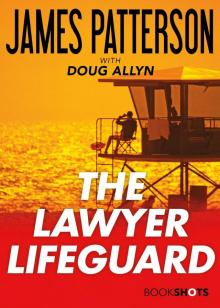 The Lawyer Lifeguard
The Lawyer Lifeguard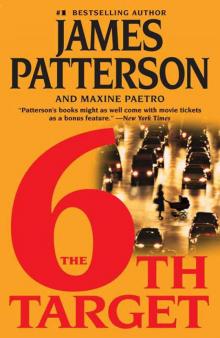 The 6th Target
The 6th Target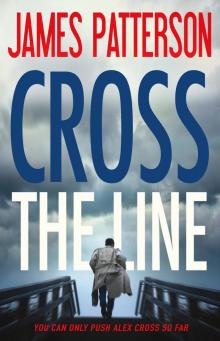 Cross the Line
Cross the Line Alert
Alert Saving the World and Other Extreme Sports
Saving the World and Other Extreme Sports 1st Case
1st Case Unlucky 13
Unlucky 13 Haunted
Haunted Cross
Cross Lost
Lost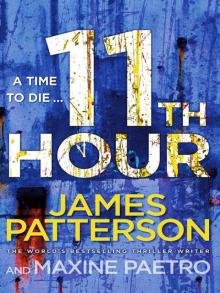 11th Hour
11th Hour Bookshots Thriller Omnibus
Bookshots Thriller Omnibus Target: Alex Cross
Target: Alex Cross Hope to Die
Hope to Die The Noise
The Noise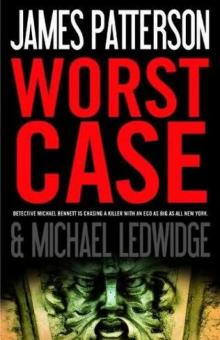 Worst Case
Worst Case Dog's Best Friend
Dog's Best Friend Nevermore: The Final Maximum Ride Adventure
Nevermore: The Final Maximum Ride Adventure I Funny: A Middle School Story
I Funny: A Middle School Story NYPD Red
NYPD Red Till Murder Do Us Part
Till Murder Do Us Part Black & Blue
Black & Blue Fang
Fang Liar Liar
Liar Liar The Inn
The Inn Sundays at Tiffany's
Sundays at Tiffany's Middle School: Escape to Australia
Middle School: Escape to Australia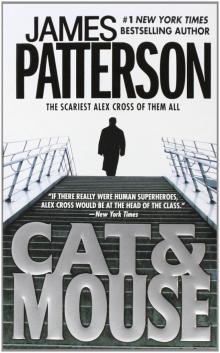 Cat and Mouse
Cat and Mouse Instinct
Instinct The Black Book
The Black Book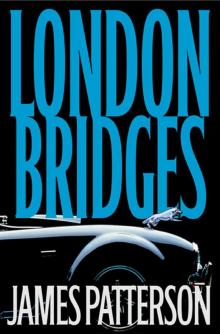 London Bridges
London Bridges Toys
Toys The Last Days of John Lennon
The Last Days of John Lennon Roses Are Red
Roses Are Red Witch & Wizard
Witch & Wizard The Dolls
The Dolls The Christmas Wedding
The Christmas Wedding The River Murders
The River Murders The 18th Abduction
The 18th Abduction The 19th Christmas
The 19th Christmas Middle School: How I Got Lost in London
Middle School: How I Got Lost in London Just My Rotten Luck
Just My Rotten Luck Red Alert
Red Alert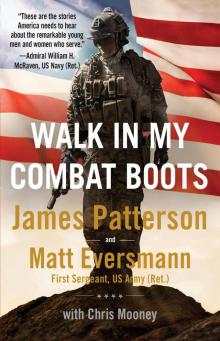 Walk in My Combat Boots
Walk in My Combat Boots Three Women Disappear
Three Women Disappear 21st Birthday
21st Birthday All-American Adventure
All-American Adventure Becoming Muhammad Ali
Becoming Muhammad Ali The Murder of an Angel
The Murder of an Angel The 13-Minute Murder
The 13-Minute Murder Rebels With a Cause
Rebels With a Cause The Trial
The Trial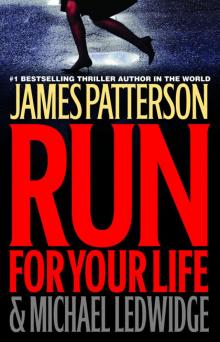 Run for Your Life
Run for Your Life The House Next Door
The House Next Door NYPD Red 2
NYPD Red 2 Ali Cross
Ali Cross The Big Bad Wolf
The Big Bad Wolf Middle School: My Brother Is a Big, Fat Liar
Middle School: My Brother Is a Big, Fat Liar Private Paris
Private Paris Miracle on the 17th Green
Miracle on the 17th Green The People vs. Alex Cross
The People vs. Alex Cross The Beach House
The Beach House Cross Kill
Cross Kill Dog Diaries
Dog Diaries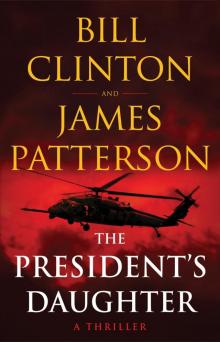 The President's Daughter
The President's Daughter Happy Howlidays
Happy Howlidays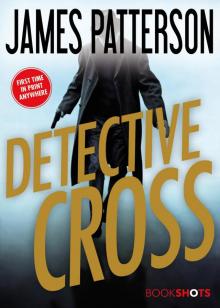 Detective Cross
Detective Cross The Paris Mysteries
The Paris Mysteries Watch the Skies
Watch the Skies 113 Minutes
113 Minutes Alex Cross's Trial
Alex Cross's Trial NYPD Red 3
NYPD Red 3 Hush Hush
Hush Hush Now You See Her
Now You See Her Merry Christmas, Alex Cross
Merry Christmas, Alex Cross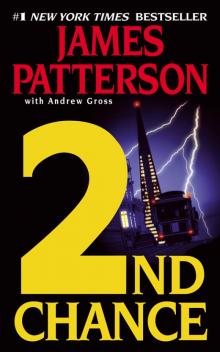 2nd Chance
2nd Chance Private Royals
Private Royals Two From the Heart
Two From the Heart Max
Max I, Funny
I, Funny Blindside (Michael Bennett)
Blindside (Michael Bennett) Sophia, Princess Among Beasts
Sophia, Princess Among Beasts Armageddon
Armageddon Don't Blink
Don't Blink NYPD Red 6
NYPD Red 6 The First Lady
The First Lady Texas Outlaw
Texas Outlaw Hush
Hush Beach Road
Beach Road Private Berlin
Private Berlin The Family Lawyer
The Family Lawyer Jack & Jill
Jack & Jill The Midwife Murders
The Midwife Murders Middle School: Rafe's Aussie Adventure
Middle School: Rafe's Aussie Adventure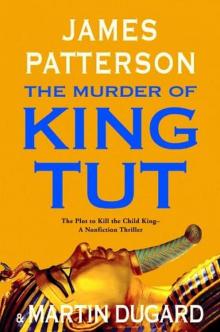 The Murder of King Tut: The Plot to Kill the Child King
The Murder of King Tut: The Plot to Kill the Child King First Love
First Love The Dangerous Days of Daniel X
The Dangerous Days of Daniel X Hawk
Hawk Private Delhi
Private Delhi The 20th Victim
The 20th Victim The Shadow
The Shadow Katt vs. Dogg
Katt vs. Dogg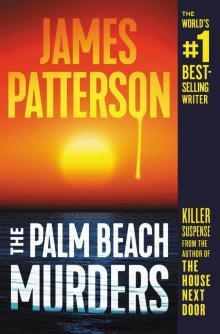 The Palm Beach Murders
The Palm Beach Murders 2 Sisters Detective Agency
2 Sisters Detective Agency Humans, Bow Down
Humans, Bow Down You've Been Warned
You've Been Warned Cradle and All
Cradle and All 20th Victim: (Women’s Murder Club 20) (Women's Murder Club)
20th Victim: (Women’s Murder Club 20) (Women's Murder Club)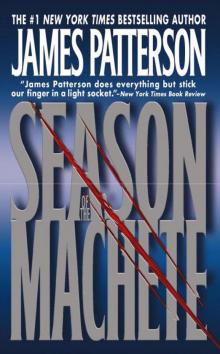 Season of the Machete
Season of the Machete Woman of God
Woman of God Mary, Mary
Mary, Mary Blindside
Blindside Invisible
Invisible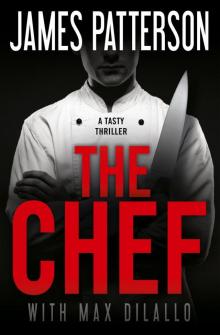 The Chef
The Chef Revenge
Revenge See How They Run
See How They Run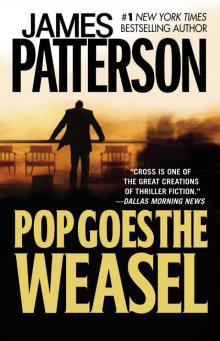 Pop Goes the Weasel
Pop Goes the Weasel 15th Affair
15th Affair Middle School: Get Me Out of Here!
Middle School: Get Me Out of Here! Middle School: How I Survived Bullies, Broccoli, and Snake Hill
Middle School: How I Survived Bullies, Broccoli, and Snake Hill From Hero to Zero - Chris Tebbetts
From Hero to Zero - Chris Tebbetts G'day, America
G'day, America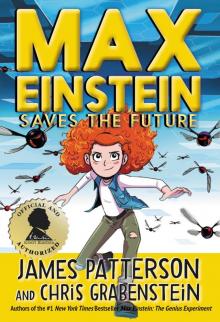 Max Einstein Saves the Future
Max Einstein Saves the Future The Cornwalls Are Gone
The Cornwalls Are Gone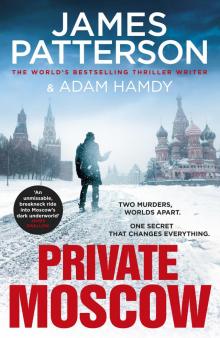 Private Moscow
Private Moscow Two Schools Out - Forever
Two Schools Out - Forever Hollywood 101
Hollywood 101 Deadly Cargo: BookShots
Deadly Cargo: BookShots 21st Birthday (Women's Murder Club)
21st Birthday (Women's Murder Club) The Sky Is Falling
The Sky Is Falling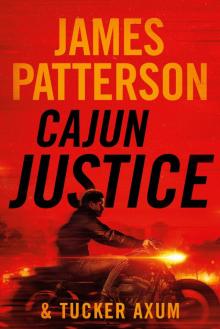 Cajun Justice
Cajun Justice Bennett 06 - Gone
Bennett 06 - Gone The House of Kennedy
The House of Kennedy Waterwings
Waterwings Murder is Forever, Volume 2
Murder is Forever, Volume 2 Maximum Ride 02
Maximum Ride 02 Treasure Hunters--The Plunder Down Under
Treasure Hunters--The Plunder Down Under Private Royals: BookShots (A Private Thriller)
Private Royals: BookShots (A Private Thriller) After the End
After the End Private India: (Private 8)
Private India: (Private 8) Escape to Australia
Escape to Australia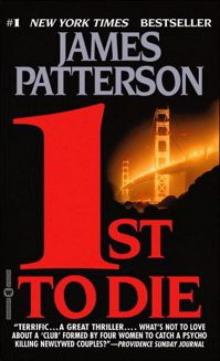 WMC - First to Die
WMC - First to Die Boys Will Be Boys
Boys Will Be Boys The Red Book
The Red Book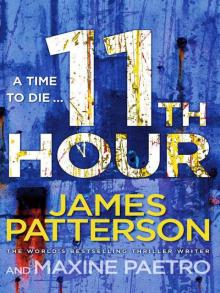 11th hour wmc-11
11th hour wmc-11 Hidden
Hidden You've Been Warned--Again
You've Been Warned--Again Unsolved
Unsolved Pottymouth and Stoopid
Pottymouth and Stoopid Hope to Die: (Alex Cross 22)
Hope to Die: (Alex Cross 22) The Moores Are Missing
The Moores Are Missing Black & Blue: BookShots (Detective Harriet Blue Series)
Black & Blue: BookShots (Detective Harriet Blue Series) Airport - Code Red: BookShots
Airport - Code Red: BookShots Kill or Be Killed
Kill or Be Killed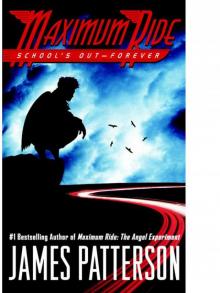 School's Out--Forever
School's Out--Forever When the Wind Blows
When the Wind Blows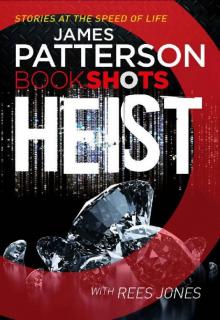 Heist: BookShots
Heist: BookShots Murder of Innocence (Murder Is Forever)
Murder of Innocence (Murder Is Forever) Red Alert_An NYPD Red Mystery
Red Alert_An NYPD Red Mystery Malicious
Malicious Scott Free
Scott Free The Summer House
The Summer House French Kiss
French Kiss Treasure Hunters
Treasure Hunters Murder Is Forever, Volume 1
Murder Is Forever, Volume 1 Secret of the Forbidden City
Secret of the Forbidden City Cross the Line: (Alex Cross 24)
Cross the Line: (Alex Cross 24) Witch & Wizard: The Fire
Witch & Wizard: The Fire![Women's Murder Club [06] The 6th Target Read online](http://i1.bookreadfree.com/i/03/24/womens_murder_club_06_the_6th_target_preview.jpg) Women's Murder Club [06] The 6th Target
Women's Murder Club [06] The 6th Target Cross My Heart ac-21
Cross My Heart ac-21 Alex Cross’s Trial ак-15
Alex Cross’s Trial ак-15 Alex Cross 03 - Jack & Jill
Alex Cross 03 - Jack & Jill Liar Liar: (Harriet Blue 3) (Detective Harriet Blue Series)
Liar Liar: (Harriet Blue 3) (Detective Harriet Blue Series) Cross Country ак-14
Cross Country ак-14 Honeymoon h-1
Honeymoon h-1 Maximum Ride: The Angel Experiment
Maximum Ride: The Angel Experiment The Big Bad Wolf ак-9
The Big Bad Wolf ак-9 Dead Heat: BookShots (Book Shots)
Dead Heat: BookShots (Book Shots) Kill and Tell
Kill and Tell Avalanche
Avalanche Robot Revolution
Robot Revolution Public School Superhero
Public School Superhero 12th of Never
12th of Never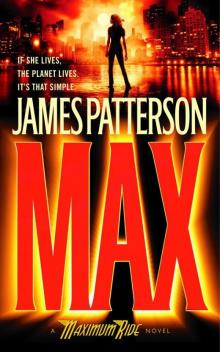 Max: A Maximum Ride Novel
Max: A Maximum Ride Novel All-American Murder
All-American Murder Murder Games
Murder Games Robots Go Wild!
Robots Go Wild! My Life Is a Joke
My Life Is a Joke Private: Gold
Private: Gold Demons and Druids
Demons and Druids Jacky Ha-Ha
Jacky Ha-Ha Postcard killers
Postcard killers Princess: A Private Novel
Princess: A Private Novel Kill Alex Cross ac-18
Kill Alex Cross ac-18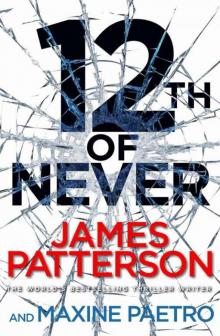 12th of Never wmc-12
12th of Never wmc-12 The Murder of King Tut
The Murder of King Tut I Totally Funniest
I Totally Funniest Cross Fire ак-17
Cross Fire ак-17 Count to Ten
Count to Ten![Women's Murder Club [10] 10th Anniversary Read online](http://i1.bookreadfree.com/i1/03/30/womens_murder_club_10_10th_anniversary_preview.jpg) Women's Murder Club [10] 10th Anniversary
Women's Murder Club [10] 10th Anniversary![Women's Murder Club [01] 1st to Die Read online](http://i1.bookreadfree.com/i1/03/31/womens_murder_club_01_1st_to_die_preview.jpg) Women's Murder Club [01] 1st to Die
Women's Murder Club [01] 1st to Die I, Michael Bennett mb-5
I, Michael Bennett mb-5 Nooners
Nooners![Women's Murder Club [08] The 8th Confession Read online](http://i1.bookreadfree.com/i1/04/03/womens_murder_club_08_the_8th_confession_preview.jpg) Women's Murder Club [08] The 8th Confession
Women's Murder Club [08] The 8th Confession Private jm-1
Private jm-1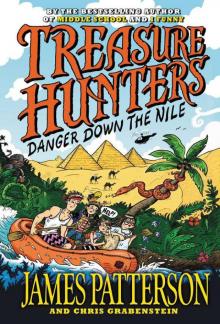 Treasure Hunters: Danger Down the Nile
Treasure Hunters: Danger Down the Nile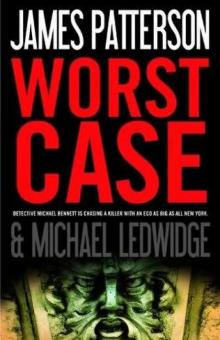 Worst Case mb-3
Worst Case mb-3 Don’t Blink
Don’t Blink The Games
The Games The Medical Examiner: A Women's Murder Club Story
The Medical Examiner: A Women's Murder Club Story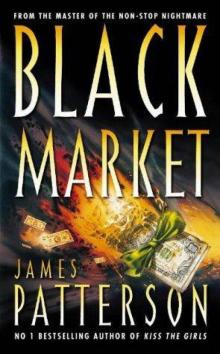 Black Market
Black Market Gone mb-6
Gone mb-6![Women's Murder Club [02] 2nd Chance Read online](http://i1.bookreadfree.com/i1/04/04/womens_murder_club_02_2nd_chance_preview.jpg) Women's Murder Club [02] 2nd Chance
Women's Murder Club [02] 2nd Chance French Twist
French Twist Kenny Wright
Kenny Wright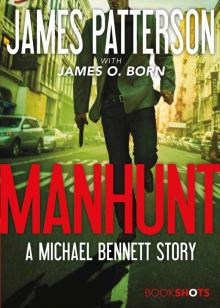 Manhunt: A Michael Bennett Story
Manhunt: A Michael Bennett Story Cross Kill: An Alex Cross Story
Cross Kill: An Alex Cross Story Confessions of a Murder Suspect td-1
Confessions of a Murder Suspect td-1 Second Honeymoon h-2
Second Honeymoon h-2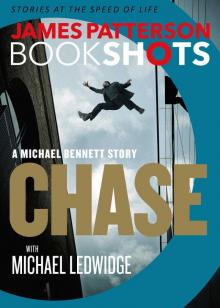 Chase_A BookShot_A Michael Bennett Story
Chase_A BookShot_A Michael Bennett Story Confessions: The Paris Mysteries
Confessions: The Paris Mysteries![Women's Murder Club [09] The 9th Judgment Read online](http://i1.bookreadfree.com/i2/04/08/womens_murder_club_09_the_9th_judgment_preview.jpg) Women's Murder Club [09] The 9th Judgment
Women's Murder Club [09] The 9th Judgment Absolute Zero
Absolute Zero Nevermore: The Final Maximum Ride Adventure mr-8
Nevermore: The Final Maximum Ride Adventure mr-8 Angel: A Maximum Ride Novel mr-7
Angel: A Maximum Ride Novel mr-7 Juror #3
Juror #3 Million-Dollar Mess Down Under
Million-Dollar Mess Down Under The Verdict: BookShots (A Jon Roscoe Thriller)
The Verdict: BookShots (A Jon Roscoe Thriller) The President Is Missing: A Novel
The President Is Missing: A Novel![Women's Murder Club [04] 4th of July Read online](http://i1.bookreadfree.com/i2/04/06/womens_murder_club_04_4th_of_july_preview.jpg) Women's Murder Club [04] 4th of July
Women's Murder Club [04] 4th of July The Hostage: BookShots (Hotel Series)
The Hostage: BookShots (Hotel Series) $10,000,000 Marriage Proposal
$10,000,000 Marriage Proposal Diary of a Succubus
Diary of a Succubus Unbelievably Boring Bart
Unbelievably Boring Bart Angel: A Maximum Ride Novel
Angel: A Maximum Ride Novel Stingrays
Stingrays Confessions: The Private School Murders
Confessions: The Private School Murders Stealing Gulfstreams
Stealing Gulfstreams![Women's Murder Club [05] The 5th Horseman Read online](http://i1.bookreadfree.com/i2/04/05/womens_murder_club_05_the_5th_horseman_preview.jpg) Women's Murder Club [05] The 5th Horseman
Women's Murder Club [05] The 5th Horseman Zoo 2
Zoo 2 Jack Morgan 02 - Private London
Jack Morgan 02 - Private London Treasure Hunters--Quest for the City of Gold
Treasure Hunters--Quest for the City of Gold The Christmas Mystery
The Christmas Mystery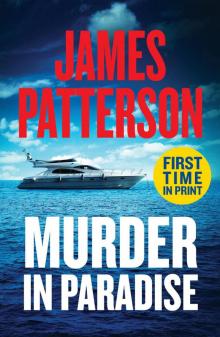 Murder in Paradise
Murder in Paradise Kidnapped: BookShots (A Jon Roscoe Thriller)
Kidnapped: BookShots (A Jon Roscoe Thriller) Triple Homicide_Thrillers
Triple Homicide_Thrillers 16th Seduction: (Women’s Murder Club 16) (Women's Murder Club)
16th Seduction: (Women’s Murder Club 16) (Women's Murder Club) 14th Deadly Sin: (Women’s Murder Club 14)
14th Deadly Sin: (Women’s Murder Club 14) Texas Ranger
Texas Ranger Witch & Wizard 04 - The Kiss
Witch & Wizard 04 - The Kiss![Women's Murder Club [03] 3rd Degree Read online](http://i1.bookreadfree.com/i2/04/12/womens_murder_club_03_3rd_degree_preview.jpg) Women's Murder Club [03] 3rd Degree
Women's Murder Club [03] 3rd Degree Break Point: BookShots
Break Point: BookShots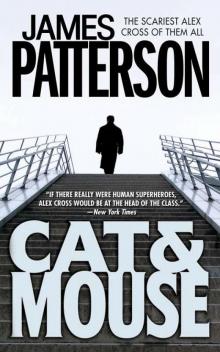 Alex Cross 04 - Cat & Mouse
Alex Cross 04 - Cat & Mouse Maximum Ride
Maximum Ride Fifty Fifty: (Harriet Blue 2) (Detective Harriet Blue Series)
Fifty Fifty: (Harriet Blue 2) (Detective Harriet Blue Series) Alex Cross 02 - Kiss the Girls
Alex Cross 02 - Kiss the Girls The President Is Missing
The President Is Missing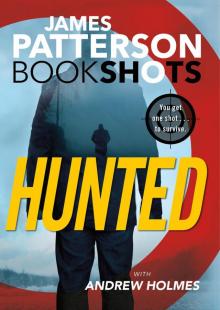 Hunted
Hunted House of Robots
House of Robots Dangerous Days of Daniel X
Dangerous Days of Daniel X Tick Tock mb-4
Tick Tock mb-4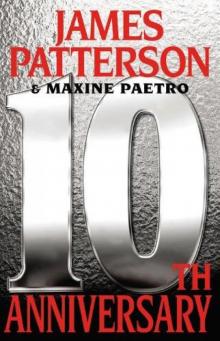 10th Anniversary wmc-10
10th Anniversary wmc-10 The Exile
The Exile Private Games-Jack Morgan 4 jm-4
Private Games-Jack Morgan 4 jm-4 Burn: (Michael Bennett 7)
Burn: (Michael Bennett 7) Laugh Out Loud
Laugh Out Loud The People vs. Alex Cross: (Alex Cross 25)
The People vs. Alex Cross: (Alex Cross 25) Peril at the Top of the World
Peril at the Top of the World I Funny TV
I Funny TV Merry Christmas, Alex Cross ac-19
Merry Christmas, Alex Cross ac-19 #1 Suspect jm-3
#1 Suspect jm-3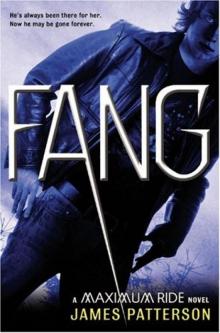 Fang: A Maximum Ride Novel
Fang: A Maximum Ride Novel![Women's Murder Club [07] 7th Heaven Read online](http://i1.bookreadfree.com/i2/04/13/womens_murder_club_07_7th_heaven_preview.jpg) Women's Murder Club [07] 7th Heaven
Women's Murder Club [07] 7th Heaven The End
The End